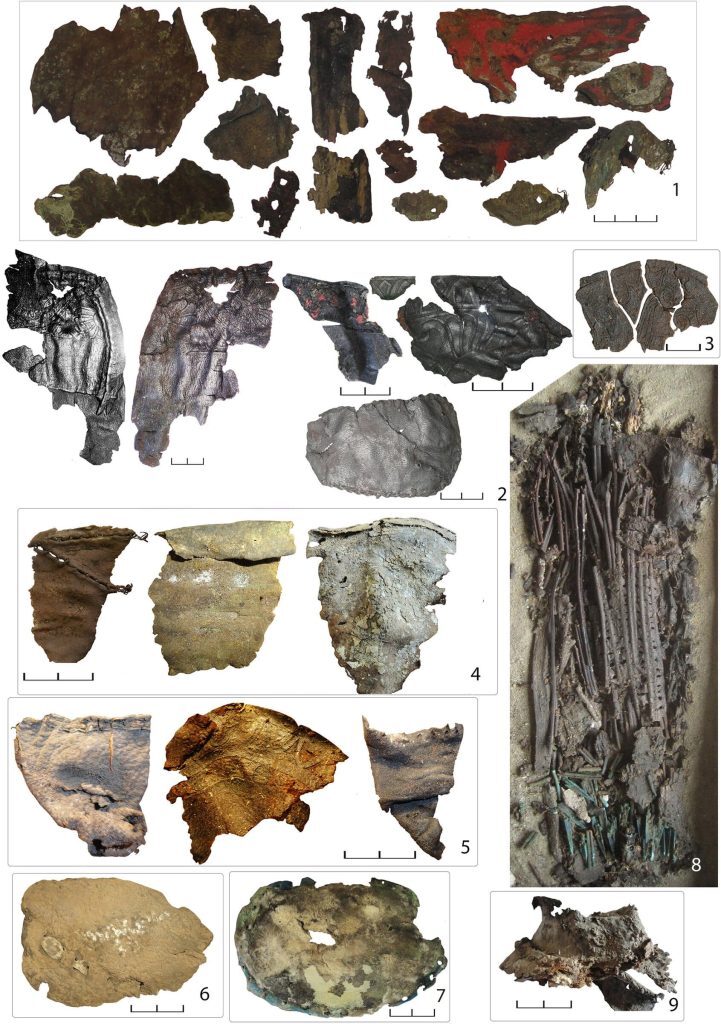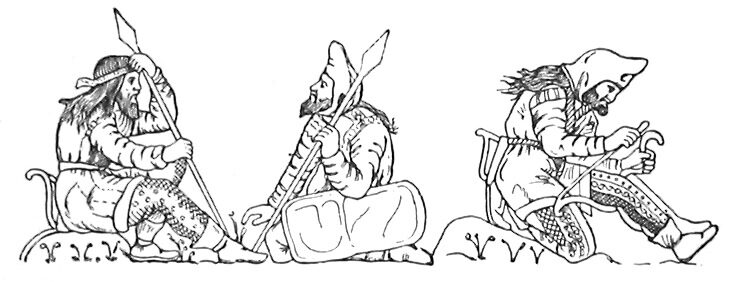
The Scythians (6th to 3rd centuries BC) were a nomadic people known for their fierce nature and mastery of horsemanship in the ancient Eurasian steppes. Their lives were deeply intertwined with the wild, expansive landscapes they roamed. Living in harmony with the harsh environment, they developed a formidable reputation as warriors and skilled riders.
Their nomadic lifestyle meant they were in constant movement, adapting to the ever-changing conditions of the steppe. They were expert archers, able to shoot accurately from horseback while galloping at high speeds — a skill that made them formidable in battle.
In their project, reported on the open-access site PLOS ONE, the researchers tested an account by the Greek historian Herodotus regarding certain behaviors of ancient Scythian warriors.

We had to take Herodotus' word for it until now, but the authors of a new study have finally provided scientific validation for these grizzly claims. The researchers were able to identify the species from which each piece of skin was taken by using a series of techniques to analyze the proteins in 45 leather samples recovered from 14 different Scythian sites in southern Ukraine.
The researchers analyzed 45 leather samples collected from 14 Scythian dig sites using a variety of paleoproteomics techniques. They were able to determine the origin of all but two of them, which were made from horse, cattle, goat, or sheep skin. The other two had a human source to back up what Herodotus said.
However, the researchers discovered pieces of leather derived from human skin in two of the quivers they examined. Further examination of the two human skin leather samples revealed that they were only used on the top parts of the quivers; the rest of the quivers were made of animal leather.
It is important to note that the Scythians were not the first to use human skin for leather. Human skin has been used for a variety of purposes throughout history, including bookbinding and the creation of macabre artifacts. The discovery of human skin leather among the Scythians, on the other hand, provides valuable insights into their cultural practices.
According to one theory, the use of human skin in leather production may have been linked to religious or ritualistic beliefs. The Scythians were well-known for their intricate funerary practices, which frequently included elaborate burial rituals and the inclusion of valuable items in tombs. Human skin leather may have been used to honor or commemorate the deceased.
Another possibility is that the use of human skin leather was a means of conquering or dominating enemies. The Scythians were skilled warriors who frequently clashed with neighboring tribes. The creation of leather items from defeated enemies' skins could have been a way for them to assert their power and intimidate their opponents.
The researchers propose that their results not only validate legends about the prehistoric Scythian fighters but also demonstrate that the fighters were making their quivers from easily accessible materials.
DOI: 10.1371/journal.pone.0294129



Reader Comments
I guess you know where they place the Scythians, don't you ...
Right around the war zone.
Albeit I take every report about history and archeology with a copious amount of salt.
On that note, are the Scythians related to the Khazars dwelling later in the same location ?
Also, how do you use a scalp as a towel? I would think leather and hair wouldn't have much utility in that regard.
What you may be remembering and what is true is that a later lamp was claimed to be made of human leather. Well, that and wishful thinking that he hit some kind of jackpot that would make him famous. Me personally, I prefer parchment or rice paper lampshades.
I'd love a good fitted suit made from the skin of my enemies...
" Keep your friends close, but your enemies closer" has a new meaning.
I admit that the following sounds like an interesting weekend project...
"...Scythian warriors carried their arrows in leather quivers made from the skin of their defeated enemies."
Fine skinthian leather, one of a kind.
We've some really sick ancestors.
I have to agree with Artex, I'd rather have my quiver made from the flesh of a friend/great warrior than the dude I just eliminated.
When you write history after the fact, they always seem to be in a hurry and don't check the facts. Also the reason we saw all those photos of starving people is because the Allies bombed the roads & rail lines so no supplies could get to the camps. Don't get me wrong they were concentration camps. People were killed, worked to death, experimented on, etc. Yet they were not exterminated by gas chambers, that part is total bullshit!
There are also videos on YT, though may have been removed by now of older gentlemen being interviewed that were in concentration camps discussing the Saturday nite concerts where classical music was played, or the children put on plays. There were soccer teams inmates played against the guards, a swimming pool and the smoke coming from the chimneys he reported was because bread was baked daily as rations.